

Max Davies
2026 GWM Haval Jolion review
4 Hours Ago

Senior Road Tester
Not only did luxury Italian carmaker Maserati last week pull the covers off its next-generation GranTurismo coupe, but in so doing has also shown off its fastest accelerating car ever.
Meet the GranTurismo Folgore EV.
It’s Maserati’s first all-electric model, capable of smashing the benchmark 0-100km/h sprint in a stupefying 2.7 seconds flat. By way of comparison, the marque’s Nettuno-engined MC20 supercar needs all of 2.9 seconds for the same run.
Folgore will also hit 200km/h in 8.8 seconds, while top speed for the EV is a claimed 320km/h plus, which equals the Trofeo petrol version.
Maserati recently announced it’s going all-electric by 2030 and will have at least one pure electric variant for every model in its lineup by 2025.
Driven by a total of three 300kW permanent magnet electric motors, one up front and two at the rear, the GranTurismo Folgore generates combined maximum outputs of 610kW of power (on overboost) and a mind-blowing 1350Nm of torque.
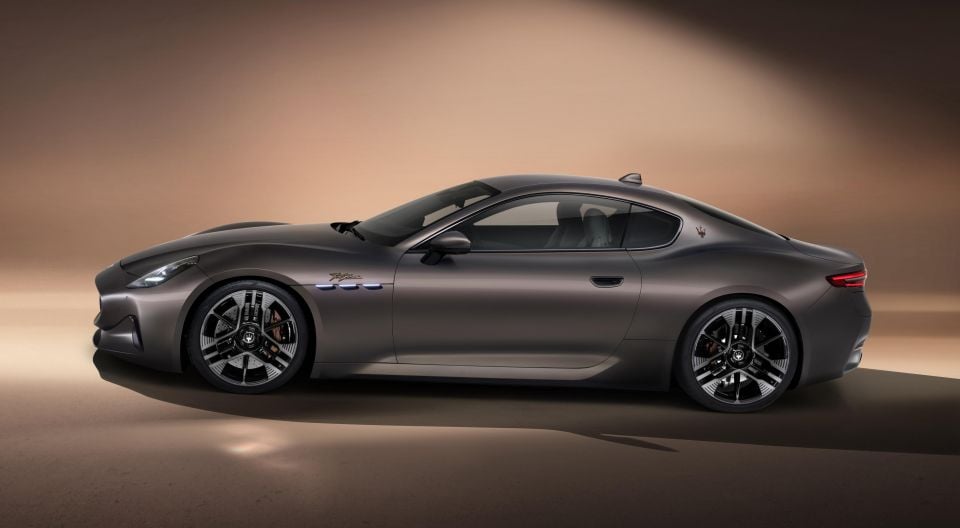
Like other high-performance EVs with multiple electric motors, the Folgore’s power unit is built around state-of-the-art 800-volt technology in order to unleash such considerable power as well as undertake rapid charge times.
The entire car is a clean-sheet design by Maserati, including the motors that reach higher levels of power density (9.2kW/kg), thanks to the use of silicon carbide (SiC) inverters borrowed from Formula E racing.
The 92.5kWh battery pack itself weighs slightly less than 600kg, and has a discharge capacity of 560kW, which it continuously transmits to the electric motors.
But it’s the shape and design of the battery pack that is unique to the Folgore and the principle reason for its claim as the lowest electric car on the market.
Maserati has dubbed it the T-Bone, which avoids the usual practice of placing the battery modules under the seats by moving them around the central tunnel which has enabled a very low H-point in the car and an overall height of just 1353mm.

To give that some perspective, the low-riding Tesla Model 3 Performance sits 1443mm high, while the upcoming Hyundai Ionic 6 (praised for its low-slung streamlined design) measures 1495mm in height.
Maserati also says handling and agility are two of Folgore’s key assets, and point to its smaller inertia tensor made possible by positioning most of the car’s mass close to the roll axis. It means the axial geometry in the battery allows for quicker changes of direction than in cars with a platform battery arrangement.
Better still, the second-generation Maserati GranTurismo is also blessed with a 50:50 weight distribution for the Folgore, while the ICE versions are 52:48 by comparison.
Likewise, the two rear motors are independent of each other, given there’s no traditional transmission to connect the wheels which makes it possible to direct torque to each side, independent of each other. In Folgore, the torque vectoring system is more variable than the system on the ICE versions, though the entire range is all-wheel drive.
The GranTurismo Folgore can apportion 100 per cent of power to the rear axle alone, even when driven in rear-wheel drive configuration only, or up to 294kW to a single rear wheel.
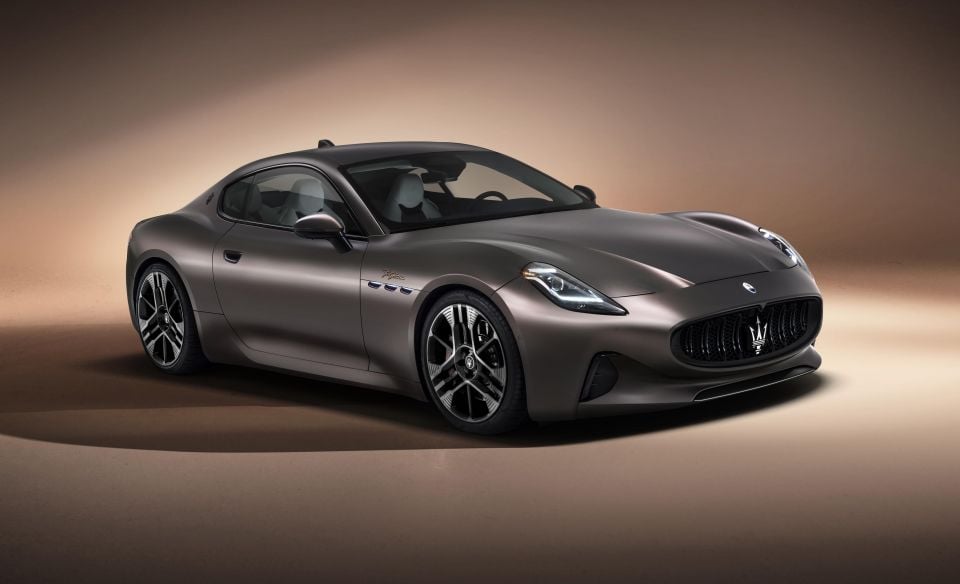
Single-pedal driving is also possible, with Folgore able to generate up to 0.65g during braking so as to enable optimal conditions during the car’s peak 400kW charging rate.
The battery-electric Folgore also gets four individual driving modes: Max Range, GT, Sport and Corsa.
In Max Range it’s all about saving energy, recommended when battery levels drop below 16 per cent with no charging facility immediately available. This mode limits the top speed to 130km/h, dials back throttle response and reduces the power of the climate control.
Maserati claims Folgore’s maximum range is 450km using the WLTP test cycle, while a full tank in the petrol versions is 650km.
GT is Folgore’s default drive mode for what Maserati claims is a genuine all-round driving experience, though peak power is curbed at 80 per cent, with some in-car sound noticeable.
Sport allows for spirited driving on public roads with 100 per cent of power available and the adaptive suspension stiffer for increased handling loads. Torque vectoring also reduces any understeer in both regen and coasting situations, and there’s more noise. Drivers can also enable launch control in this mode as well as in the track mode.

Corsa(Racing) mode unleashes maximum available power from Folgore’s 800-volt power unit as well as minimising stability control systems. This mode also ramps up all the major controls, including throttle response and torque delivery from all three motors. Additionally, suspension stiffens and ride height is lowered.
Corsa also lets drivers make further adjustments through the drive mode controls on the infotainment screen for situations from wet-surface performance to maximum drift angles.
Moreover, powertrain management on the run is made possible using Max boost and Endurance, which allows for all-out performance on track over a prolonged period by managing the vehicle’s temperature Finally, the Folgore’s level of regen braking can be set to any one of four levels using the paddle-shifters.
Despite the all-electric powertrain, Maserati claims it has created an “all-round sound experience”, by engineers at the Maserati innovation Lab, who have used the 1195W, 19-speaker Sonus faber 3D audio system to achieve a ‘signature’ Maserati sound experience specifically for Folgore.
Design wise, Maserati says it carried over nothing from the previous generation GranTurismo, although at first glance the car looks decidedly similar. However, the new model sits 24mm lower, 20mm wider, with a 24mm lower hip-point for a sleeker profile.

The car that maintains its instantly recognisable proportions, including long bonnet and steeply tapered roof line. There’s now more emphasises the curve of the C-pillar which features a more elegant version of the latest-look Trident logo.
GranTurismo is built on the Maserati’s latest architecture which takes advantage of lightweight materials such as aluminium (70 per cent), magnesium and high-strength steel for what is a claimed best-in-class weight advantage across the range, including the Folgore EV.
It’s no surprise the new GranTurismo looks more chiselled, thanks to an entirely new front end that sees the bonnet meld into the front fenders that gives the appearance of a single clamshell-style panel that Maserati calls the ‘cofango’. It’s a portmanteau made up of both cofango (bonnet) and parafango (fender), and refers to one component made up of two parts.
Maserati claims the surface area of the cofango is a market-leading 3.0mthat uses industrial moulds to create GranTurismo’s more curvaceous panels.
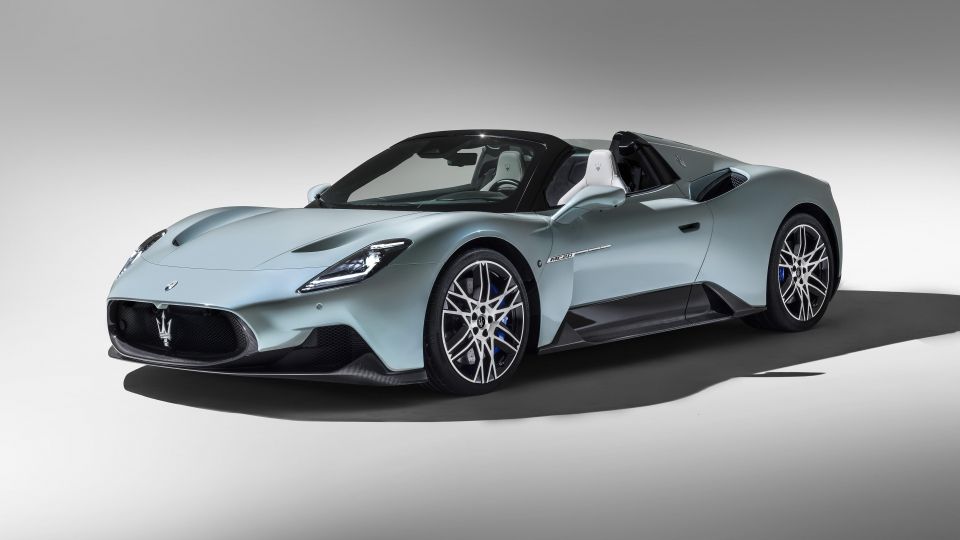
Like all versions of GranTurismo, the Folgore borrows design cues from the MC20 supercar, including vertical headlight assemblies and 3D Trident logo on the grille. The grille itself is unique to the EV with gloss-black inserts on a partly anodised silk black base.
There’s more gloss-black for the splitters, door handles, daylight opening and rear handle, while the Trident logo and script, including ‘Maserati’, ‘Folgore’ and ‘GranTurismo’ are in dark copper.
It’s the combination of Folgore-specific splitters, diamond-cut gloss-black wheels and front diffusers that contributes to its seven per cent improved drag coefficient (0.26) over petrol versions of GranTurismo (0.28). And, to reduce wind noise inside the wheel arch, there’s an air inlet placed between the bumper and wheel arch.
For some perspective, the MC20 has a Cof 0.38, which isn’t all that good, likely the result of extra cooling intakes designed to Jettison heat in the engine bay.
The rear LED taillights are also new, although it’s a mix of Maserati’s classic boomerang design and a harpoon symbol, which gives the effect of a lower profile look overall.
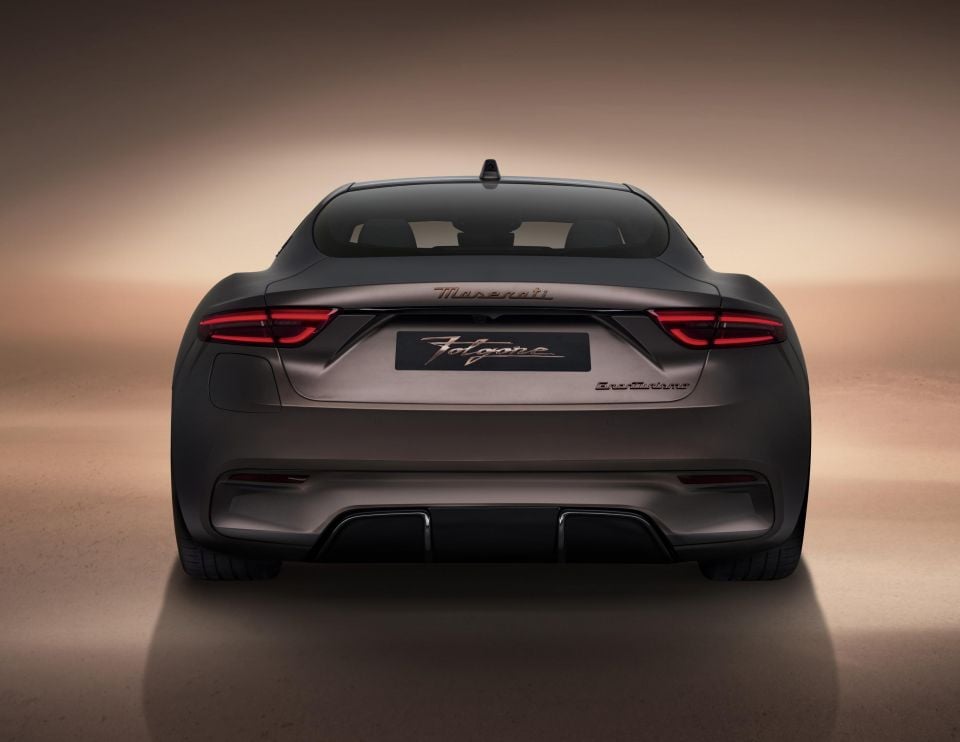
Folgore also gets the same spilt wheel and tyre set-up as the petrol versions (front – 265/35 ZR20, rear – 295/30 ZR21), though slightly lower-profile rubber up front. The wheel itself is an Aero design for reduced turbulence at speed through better airflow.
Braking hardware remains the same across the entire GranTurismo range, with Brembo six-piston 380mm brakes up front, and four-piston 350mm stoppers at the rear. That’s despite the Folgore tipping the scales at 2260kg, 456kg more than petrol versions.
Folgore also gets its own launch colour, Rame Folgore from Maserati’s Fuoriserie customisation program – an iridescent paint inspired by the façade of the Guggenheim in Bilbao, where copper hues coexist with bluish-grey tones brought out by various pigments in the paint.
Additionally, Folgore is available in any one of six colours in the standard GranTurismo palette including Bianco, Grigio Maratea, Grigio Maratea Matte, Nero Ribelle, Blu Emozione, and Blu Nobile.
Other colours in the Fuoriserie range, include PrimaSerie Launch Edition, Grigio Cangiante, Rosso Granturismo and Giallo Corsa complete the specialised selection.

Inside, GranTurismo looks to mirror the same screen configuration as Maserati’s all-new SUV, the Grecale (factory pics won’t be released until January 2023), which uses multiple screens, including a 12.3-inch centre touchscreen, an 8.8-inch lower display for the climate control, along with a 12.3-inch configurable digital instrument cluster.
There’s also a projected head-up display, along with a digital rear-view camera borrowed from the MC20 halo car. As with Grecale, GranTurismo also gets a digital version of the Maserati’s trademark dash-mounted clock that’s not only multifunctional, but also responds to the voice command “Hey Maserati” to do things like set the cabin temperature.
GranTurismo uses the Android operating system for its multimedia platform with high speed data transfers for up to five user profiles, though passengers can still use Apple CarPlay and Android Auto to access personalised smartphone apps wirelessly.
With Maserati Connect, GranTurismo owners also get home to car control, on the road connectivity, Maserati Guard, over-the-air software updates in addition to phone mirroring.
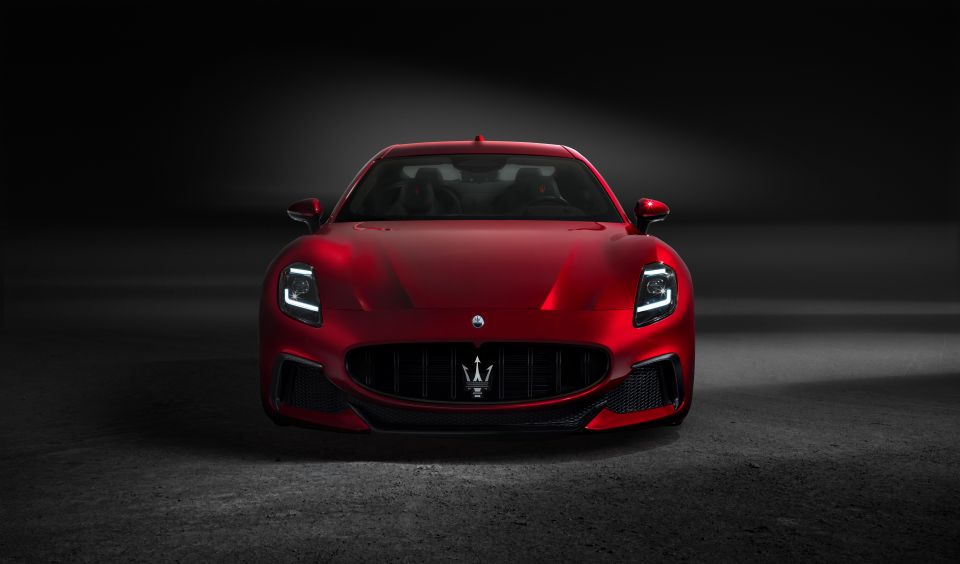
There’s an all-new heated steering wheel for GranTurismo too, which is exclusively denim coloured for Folgore, and features start/stop and drive mode buttons as well as paddleshifters in brushed dark aluminium.
Two interior themes are available for Folgore: a light Ice/Denim version, or black upholstery and contrast stitching in copper. The 18-way seats are built on a lightweight frame with integrated headrests and heating and cooling.
There’s also a sustainable fabric option called Econyl, made from recycled nets from the world’s oceans that resembles bodysuit material, combined with laser processing.
Just as rear legroom has grown by 46mm, boot capacity has increased by 20 per cent to 310 litres in the petrol cars, while Folgore gets slightly less at 270L.
Local pricing and specification for the new GranTurismo range will be announced closer to its launch in the second half of 2023.
MORE: Maserati is flying, and we should all be thankful
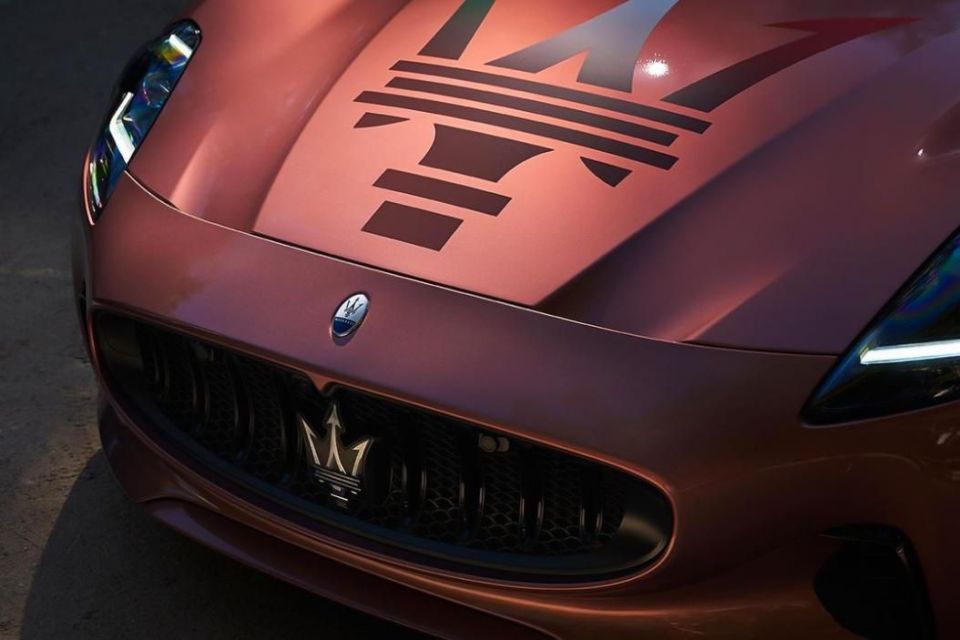
Where expert car reviews meet expert car buying – CarExpert gives you trusted advice, personalised service and real savings on your next new car.
Anthony Crawford is a CarExpert co-founder and senior presenter with 20+years in automotive journalism and content creation.


Max Davies
4 Hours Ago


Damion Smy
12 Hours Ago
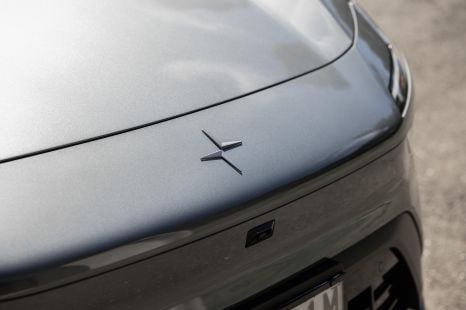

Damion Smy
13 Hours Ago


Damion Smy
14 Hours Ago


Damion Smy
17 Hours Ago


CarExpert.com.au
18 Hours Ago